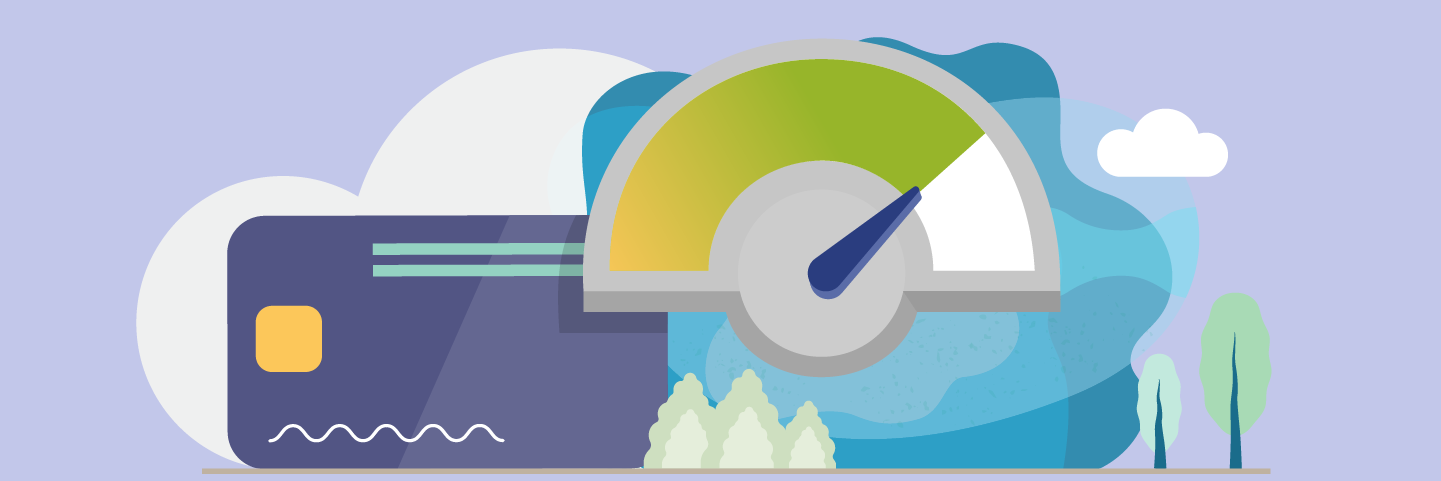How to Get Into Credit Card Debt
If you don’t pay your bill in full, you begin to carry a balance that is charged interest. You can still charge your card up to the limit over the next billing cycle, even if you paid less than the full amount due.
That’s how people get into credit card debt. They develop a habit of spending more each month than they can afford to pay back, and they’re charged a high interest rate on the balance they still owe.
The way to stay out of credit card debt is to avoid charging more than you know you can pay back each month and making sure you pay your bill on time and in full. But sometimes that’s not possible. How can you stay in good standing with your credit card company if you can’t afford your bill?
Making Minimum Payments
Credit cards allow you to make a minimum payment that’s clearly indicated on your bill. It’s the greater of a flat fee or, for larger balances, a small percentage of the balance (around 1 to 2 percent).
You must pay at least the minimum to avoid late fees, an interest rate increase, and damage to your credit score. If you do nothing else to pay down your credit card balance, at least make minimum payments to remain in good standing.
You have from the end of the billing cycle until the due date to pay. This 21-day time frame is called the grace period.
What Happens When You Only Pay the Minimum?
While paying the minimum will help you avoid negative consequences, stopping there will lock you into a cycle of credit card debt. Here’s an example of how that happens.
Suppose that over the course of a month, you charge $500 to your brand-new credit card, which has a $1,000 limit and charges a 16 percent APR. Your credit card issuer charges the greater of $25 or 1% of your balance, so in your case they charge $25. The first bill arrives and, unfortunately, you’re short on cash and can only afford the minimum payment right now.
You now owe $475 and can charge up to $525 over the next billing cycle (your credit limit minus the balance you are carrying over from last month).
If you kept making $25 payments, it would take you two years pay off the balance, and you’d spend $85 in interest payments on top of the original $500 owed.
In that example, you used your credit card for one month and then stopped, but odds are you’ll still use your credit card in the future. Let’s say that in your second month with this credit card, you charged $300. Your next bill will add that to the $475 plus interest you still owe.
If you keep using your credit card and only pay the minimum amount, your balance and interest charges are going to grow exponentially. As time passes, it’ll only become more difficult to get out of credit card debt.
Because your credit score is partially determined based on the amounts you owe, getting into credit card debt can lower your score. Over time, this could make it more difficult to take out a loan, rent a home, get access to utilities without having to make a deposit, or even get a job.
|
The Power of Paying More
If you’re facing a credit card bill you can’t pay off in full, consider at least paying more than the minimum payment.
Let’s go back to that $500 credit card bill at 16 percent APR. Paying the $25 minimum while never using the card again means two years of debt and $85 in interest payments.
But what if you could pay $50 a month instead? You’d be debt-free 13 months faster and pay $45 less in interest.
How to Get Out of Credit Card Debt Faster
If you’re in credit card debt, the first thing to do is stop using your credit card. Don’t make it easy to spend more money than you have.
This is a good time to carefully budget and use only cash to pay for your monthly expenses. Negotiate with your internet service provider and cell phone company to see if they can offer you lower monthly rates.
Put any money you free up by cutting expenses toward your debt. If you get a tax refund or a bonus from work, use that money to get out of debt faster, too.
What if You Can’t Afford Your Credit Card Payments?
If you can’t even afford the minimum payment, ignoring your credit cards bills will not make your problem disappear. On the contrary, you’ll incur late fees, reduce your credit score, and increase your interest rate — and that’s before you get calls from debt collectors.
Call your credit card company and explain your situation. If you show them that you’re serious about paying them back, they may be able to help you by allowing you to make lower payments.
|
